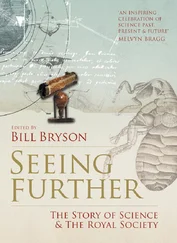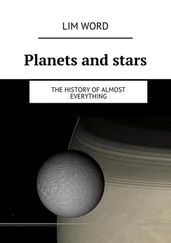We have been spoiled by artists’ renderings into imagining a clarity of resolution that doesn’t exist in actual astronomy. Pluto in Christy’s photograph is faint and fuzzy-a piece of cosmic lint-and its moon is not the romantically backlit, crisply delineated companion orb you would get in a National Geographic painting, but rather just a tiny and extremely indistinct hint of additional fuzziness. Such was the fuzziness, in fact, that it took seven years for anyone to spot the moon again and thus independently confirm its existence.
One nice touch about Christy’s discovery was that it happened in Flagstaff, for it was there in 1930 that Pluto had been found in the first place. That seminal event in astronomy was largely to the credit of the astronomer Percival Lowell. Lowell, who came from one of the oldest and wealthiest Boston families (the one in the famous ditty about Boston being the home of the bean and the cod, where Lowells spoke only to Cabots, while Cabots spoke only to God), endowed the famous observatory that bears his name, but is most indelibly remembered for his belief that Mars was covered with canals built by industrious Martians for purposes of conveying water from polar regions to the dry but productive lands nearer the equator.
Lowell’s other abiding conviction was that there existed, somewhere out beyond Neptune, an undiscovered ninth planet, dubbed Planet X. Lowell based this belief on irregularities he detected in the orbits of Uranus and Neptune, and devoted the last years of his life to trying to find the gassy giant he was certain was out there. Unfortunately, he died suddenly in 1916, at least partly exhausted by his quest, and the search fell into abeyance while Lowell’s heirs squabbled over his estate. However, in 1929, partly as a way of deflecting attention away from the Mars canal saga (which by now had become a serious embarrassment), the Lowell Observatory directors decided to resume the search and to that end hired a young man from Kansas named Clyde Tombaugh.
Tombaugh had no formal training as an astronomer, but he was diligent and he was astute, and after a year’s patient searching he somehow spotted Pluto, a faint point of light in a glittery firmament. It was a miraculous find, and what made it all the more striking was that the observations on which Lowell had predicted the existence of a planet beyond Neptune proved to be comprehensively erroneous. Tombaugh could see at once that the new planet was nothing like the massive gasball Lowell had postulated, but any reservations he or anyone else had about the character of the new planet were soon swept aside in the delirium that attended almost any big news story in that easily excited age. This was the first American-discovered planet, and no one was going to be distracted by the thought that it was really just a distant icy dot. It was named Pluto at least partly because the first two letters made a monogram from Lowell’s initials. Lowell was posthumously hailed everywhere as a genius of the first order, and Tombaugh was largely forgotten, except among planetary astronomers, who tend to revere him.
A few astronomers continue to think there may be a Planet X out there-a real whopper, perhaps as much as ten times the size of Jupiter, but so far out as to be invisible to us. (It would receive so little sunlight that it would have almost none to reflect.) The idea is that it wouldn’t be a conventional planet like Jupiter or Saturn-it’s much too far away for that; we’re talking perhaps 4.5 trillion miles-but more like a sun that never quite made it. Most star systems in the cosmos are binary (double-starred), which makes our solitary sun a slight oddity.
As for Pluto itself, nobody is quite sure how big it is, or what it is made of, what kind of atmosphere it has, or even what it really is. A lot of astronomers believe it isn’t a planet at all, but merely the largest object so far found in a zone of galactic debris known as the Kuiper belt. The Kuiper belt was actually theorized by an astronomer named F. C. Leonard in 1930, but the name honors Gerard Kuiper, a Dutch native working in America, who expanded the idea. The Kuiper belt is the source of what are known as short-period comets-those that come past pretty regularly-of which the most famous is Halley’s comet. The more reclusive long-period comets (among them the recent visitors Hale-Bopp and Hyakutake) come from the much more distant Oort cloud, about which more presently.
It is certainly true that Pluto doesn’t act much like the other planets. Not only is it runty and obscure, but it is so variable in its motions that no one can tell you exactly where Pluto will be a century hence. Whereas the other planets orbit on more or less the same plane, Pluto’s orbital path is tipped (as it were) out of alignment at an angle of seventeen degrees, like the brim of a hat tilted rakishly on someone’s head. Its orbit is so irregular that for substantial periods on each of its lonely circuits around the Sun it is closer to us than Neptune is. For most of the 1980s and 1990s, Neptune was in fact the solar system’s most far-flung planet. Only on February 11, 1999, did Pluto return to the outside lane, there to remain for the next 228 years.
So if Pluto really is a planet, it is certainly an odd one. It is very tiny: just one-quarter of 1 percent as massive as Earth. If you set it down on top of the United States, it would cover not quite half the lower forty-eight states. This alone makes it extremely anomalous; it means that our planetary system consists of four rocky inner planets, four gassy outer giants, and a tiny, solitary iceball. Moreover, there is every reason to suppose that we may soon begin to find other even larger icy spheres in the same portion of space. Then we will have problems. After Christy spotted Pluto’s moon, astronomers began to regard that section of the cosmos more attentively and as of early December 2002 had found over six hundred additional Trans-Neptunian Objects, or Plutinos as they are alternatively called. One, dubbed Varuna, is nearly as big as Pluto’s moon. Astronomers now think there may be billions of these objects. The difficulty is that many of them are awfully dark. Typically they have an albedo, or reflectiveness, of just 4 percent, about the same as a lump of charcoal-and of course these lumps of charcoal are about four billion miles away.
And how far is that exactly? It’s almost beyond imagining. Space, you see, is just enormous-just enormous. Let’s imagine, for purposes of edification and entertainment, that we are about to go on a journey by rocketship. We won’t go terribly far-just to the edge of our own solar system-but we need to get a fix on how big a place space is and what a small part of it we occupy.
Now the bad news, I’m afraid, is that we won’t be home for supper. Even at the speed of light, it would take seven hours to get to Pluto. But of course we can’t travel at anything like that speed. We’ll have to go at the speed of a spaceship, and these are rather more lumbering. The best speeds yet achieved by any human object are those of the Voyager 1 and 2 spacecraft, which are now flying away from us at about thirty-five thousand miles an hour.
The reason the Voyager craft were launched when they were (in August and September 1977) was that Jupiter, Saturn, Uranus, and Neptune were aligned in a way that happens only once every 175 years. This enabled the two Voyagers to use a “gravity assist” technique in which the craft were successively flung from one gassy giant to the next in a kind of cosmic version of “crack the whip.” Even so, it took them nine years to reach Uranus and a dozen to cross the orbit of Pluto. The good news is that if we wait until January 2006 (which is when NASA’s New Horizons spacecraft is tentatively scheduled to depart for Pluto) we can take advantage of favorable Jovian positioning, plus some advances in technology, and get there in only a decade or so-though getting home again will take rather longer, I’m afraid. At all events, it’s going to be a long trip.
Читать дальше












